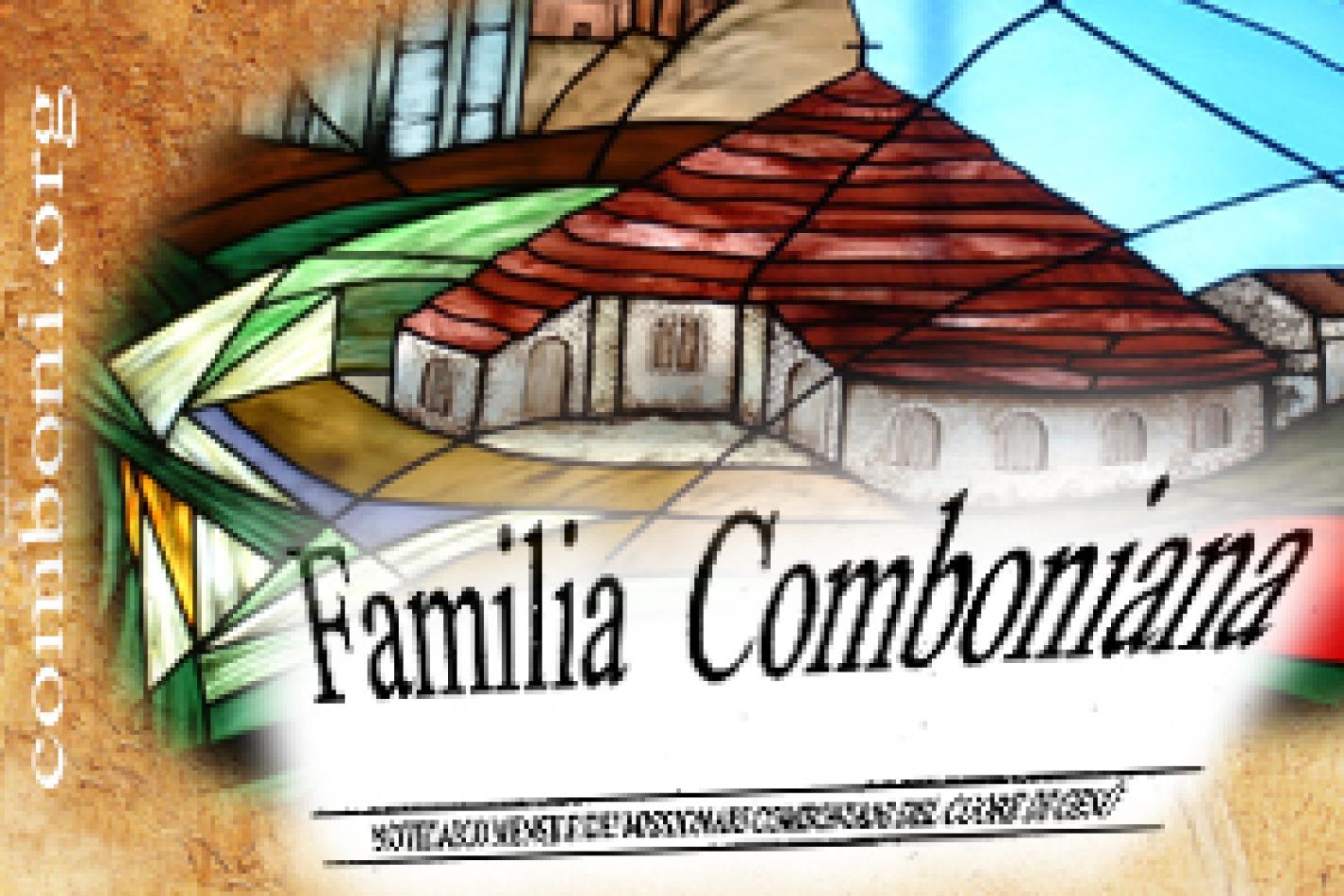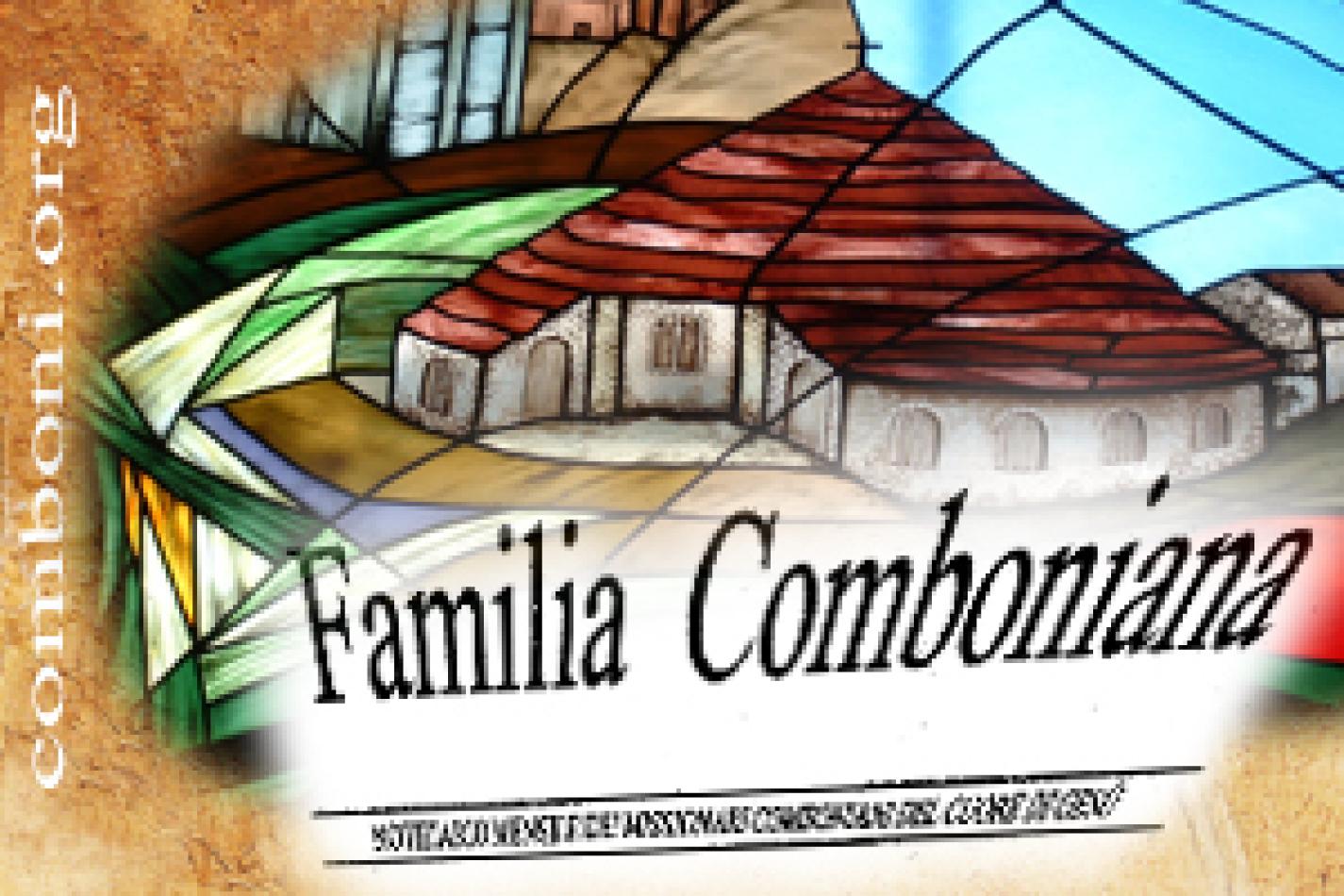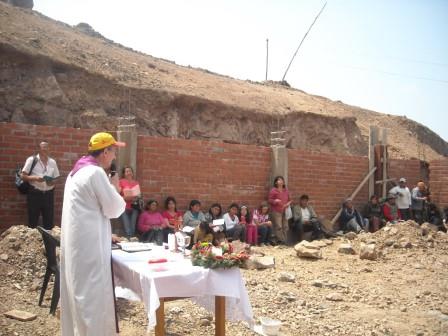Daniel Comboni
Comboni Missionaries
Institutional area
Other links
Newsletter
Saturday, May 24, 2014
The Spirit who moved St. Daniel Comboni to write the Plan for the Regeneration of Africa continues to work today in the apostolic activity of many Comboni Missionaries in the four continents. As a concrete example of this we bring to the attention of all the pastoral plan of the parish of “Cristo Misionero del Padre” on the outskirts of Lima.
150 YEARS
OF ST. DANIEL COMBONI’S PLAN
An example of pastoral planning:
the Parish of
Cristo Misionero del Padre
The parish of “Cristo Misionero del Padre”,
an offshoot of the parish of “Los Doce Apóstoles”, where we Comboni Missionaries began our work of evangelisation in 1970, drawing inspiration from our Founder to work according to a plan, directs and organises all its pastoral activity according to the pastoral plan of the Movimento per un Mondo Migliore, better known as the Piano NIP (New Image of a Parish) or PRP (Project for Parish Renewal).
Working in this manner allows each missionary to give continuity to the work begun and to count on the formation and maturity of the lay men and women since it is mostly they who, accompanied by their priests, carry out the work of evangelisation in this place.
We believe that these two objectives – continuity of apostolic action (in spite of the rotation of Comboni personnel) and the broad participation of the laity, both men and women – are clearly in line with the spirit of St. Daniel Comboni and his Plan, as well as with the ecclesiology of Vatican II and that of the magisterium of the Latin-American Church.
"The House of Talents",
Fr. Juan Armando
Goicochea Calderón.
The PRP Plan and its spirituality
The Better World Movement (1958-1965) and the impulse provided by Vatican II, gave birth, in the decade following the Council, to the Project for Parish renewal, better known as the “New Image of a Parish”, with a series of new courses and projects of communitarian spirituality.
Il “PRP Plan” is a pastoral method, a project for parish renewal, inspired by the Bible and the Magisterium, that constantly seeks the participation and the holiness of the people of God, organised as community of faith and mission which, in the Chorillos quarter of Lima city, has produced extraordinary fruits during the past four years.
Even though a good number of Comboni Missionaries of different nationalities passed through the parish, the Plan was adhered to faithfully, already giving rise to four parishes known for their high degree of lay participation, strongly in line with the Comboni principle of making the people the protagonists of their history.
This pastoral method is based on some basic principles:
a) that salvation is a personal and communitarian matter (and not simply personal);
b) that this salvation experience becomes possible in the Catholic community itself;
c) that the growth of individual persons, Christian perfection and holiness are lived and developed in interpersonal relationship;
d) that pastoral action is valid only if it creates community-Church and not a community that is partial, peculiar or special of groups in competition.
This means that, in community, we seek holiness together and not individually, since there is no Christian who is isolated but all of us live in communion after the example of the Triune God. Just as Jesus prayed to the Father saying “Father most holy... that they may be one, even as we are one” (Jn 17,11).
How does the Plan develop?
The PRP Plan sees the parish, not as a centre where one goes for religious services but as a “community of communities” as the Latin-American documents state. It endeavours to promote the ample pastoral participation of the laity and to go out and meet the people, decentralising initiatives and activities. It should be noted that, with these priorities, it is the parish which approaches the people and not the opposite, to create gradually and at the pace of the people, the ideal of the parish that is a community of faith, of charity, of worship and is missionary, sustained by the basic ecclesial communities (BEC).
Following this plan, the lay person, male or female, is no longer a spectator, one who simply ‘assists’ at Sunday Mass but becomes a co-protagonist and co-responsible for the pastoral work and evangelisation that has been entrusted to them by Jesus Christ and the Catholic Church in virtue of their Baptism. This is one of the more important merits of the Project for Parish Renewal – the PPR Plan.
Fr. Sergio Agustoni
Comboni missionary.
Il PRP Plan in our parish
The parish of Cristo Misionero del Padre was founded on 17 November, 1995, when Mgr. Augusto Vargas Alzamora was Archbishop of Lima. As stated above, it was broken off from the parish of Los Doce Apóstoles, administered by Comboni Missionaries following the same PRP Plan when the central and more developed part was entrusted to the diocesan clergy.
With almost 87,000 inhabitants, it is quite vast and diversified with areas that represent all the socio-economic variety of Chorrillos, a district of the municipality of Lima, between the inevitable sandy hills of the Peruvian capital and the Pacific Ocean. Despite these social, economic and cultural differences as well as the particular aspects of each area community which give them a definite sector personality, the unity and identity of the parish is always maintained and sought; in this way, socio-economic diversity is taken as something to be treasured which nourishes the spiritual conviction of what we do, reaffirms our faith and, with the evidence of so much Christian witness, the conviction that God is for everyone.
In this project for parish renewal, we, in fact, are seeking to eliminate social and cultural differences and also to bridge the gap between clergy and people, the organised Church and the great number of people who usually do not participate in ecclesial activities.
Seeing, Judging, Acting
As is by now the custom in America – and as, in fact, Comboni himself used to do, even if he did not use these same words – we, too, concretely use the methodology of the three steps: “seeing, judging, acting”. For us:
A) Seeing the situation means seeing all those people scattered throughout the hills of the city, divided, with various economic, social, family and educational problems, who take little part in the normal life of the Church. It means becoming aware of a situation that reveals that only 10% of our people attend Mass and that, despite the enormous pastoral work carried out, the committed laypeople are only 1.1%.
B) Judging in the light of God leads us to become aware of the fact the God wants us “all to be one” (Jn 17, 20-21) and “that all may be saved and come to the light of the truth”. We start with the ideal of the parish as a community of communities, formed by basic ecclesial communities and by families in general, all linked to and directed by the parish priest.
C) Acting according to a plan means acting in such a way that, starting from the existing concrete reality, we journey towards the ideal we dream of. To reach it, this project adopts general goals:
a) In the long term: to have a parish that is a community of communities.
b) In the medium term: to have a parish that is a community of faith.
c) In the short term: to succeed in giving rise to small groups for Biblical reflection.
These three general goals, which are the nearest ideals, determine the three great steps of the Project for Parish Renewal, the PPR Plan.
The three stages of the Plan
Stage 1: awareness-raising and announcing. It may last from 6 to 10 years. The ideal would be 10, considering the degree of progress in reaching the goals. It has three phases:
- Awareness-raising regarding reconciliation.
- Openness to fraternity.
- Considering oneself part of that family of brothers and sisters which is the Church.
This phase culminates in a great feast of fraternity called the REDEMPTIVE EVENT.
Stage 2: evangelisation and the process of conversion which begins with the Redemptive Event and has, therefore, three phases during which we try to:
- Discover the Bible as the Word of God.
- Rediscover the Faith.
- Rediscover Christ together with the requirements of discipleship.
This phase culminates in a great Parish Synod or CONGRESS OF THE CATHOLIC FAITH.
Stage 3: permanent catechesis and raising awareness of the fact that we are the people of God; this, too, has three phases:
- We are Communities of Christ (Baptism, Church and Christ).
- The Spirit unites us (Confirmation, Reconciliation, Matrimony).
- The service of the community (Eucharist, Holy Orders, Lay ministries).
This stage culminates in a great EUCHARISTIC CONGRESS.
Our parish is at present concluding the second phase of the third stage; we are in a process of permanent catechesis, rediscovering our mission in the world of today.
Pastoral Areas
At this moment, our parish is made up of 12 communities with two parish centres and our pastoral action unfolds in 15 pastoral areas, each with its own catechetical programme, its own apostolic activities and its own leaders. These are:
1. Pastoral of the Multitudes (directed to all);
2. Pastoral of Communications (messengers: a large group of people who undertake to communicate the weekly progress of the parish to all its inhabitants);
3. Pastoral of the Small communities (moderators – facilitators);
4. Pastoral of the Family (engaged and married couples);
5. Pastoral of Catechesis (children, youth, adults);
6. Pastoral of the Liturgy (supervisors, readers, choirs, acolytes);
7. Social Pastoral (fraternal help, old age, providing meals, protection of children and adolescents);
8. Pastoral of Health (sick and elderly);
9. Youth Pastoral (youth groups, meetings for young people);
10. Pastoral of Spirituality Movements (fraternities, Marian groups, prayer groups);
11. Pastoral of Meetings for Christian Promotion (adults: men and women);
12. Pastoral of Missionary Childhood (children, adolescents);
13. Pastoral of Education (schools);
14. Pastoral of Art (theatre, music, dance);
15. Justice, Peace and Integrity of Creation Group (transversal, all men and women).
Each of these Pastoral activities has its own supervisors, its own formative journey and its own specific field of action in harmony with the overall parish programme. The parish, too, together with the Parish Priest and his Curates, has its Central Coordination Committee where the different pastoral areas are represented.
Once a year a review and assessment of the Plan is made which is constantly updated, corrected and broadened as the need arises.
In this context, the work of the priest consists in facilitating and keeping things moving, beside, of course, the specific aspect of the sacraments. Priests and laity collaborate and help one another just as Comboni wished in his Plan for Africa, with the goal of helping the communities of life to develop into communities that are fraternal, in solidarity with each other and missionary.
Chorrillos (Lima)
Fr. Juan Armando Goicochea Calderón, mccj









